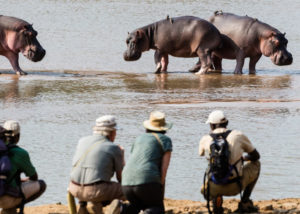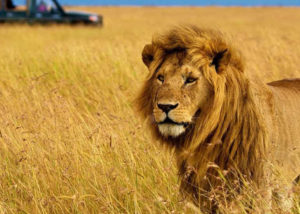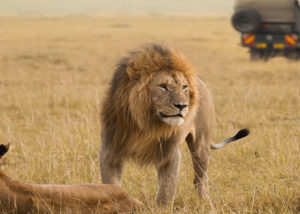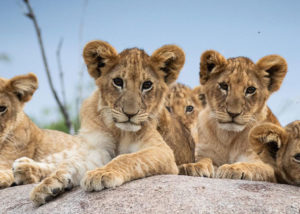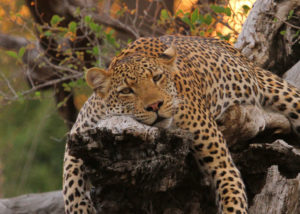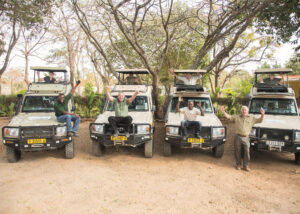PHOTOGRAPHIC SAFARIS
All of Zambia’s safaris and game lodges offer superb photographic opportunities, either on a walking safari or from an open vehicle. Good low-lighting conditions and rich colours abound on early morning and late evening game drives or walks.
If wildlife imagery is your thing, some of the operators specialise in catering to keen amateur and even professional photographers. Ask if they provide the following:
- Specially modified game-drive vehicles with special mounts for your camera. A few may even have seats that rotate 360 degrees and have removed some seats to give photographers more room.
- Bean bags and dust covers with all passengers having a window seat.
- A guide who is also interested in photography and/or who knows how to position the vehicle for the best light, clearest shot or to avoid shadows.
- Flexible and/or private game drives. Photographers usually want to head out as early as possible and stay at specific sightings for much longer than other guests. If you don’t want to be ‘rushed’, consider paying extra for a private vehicle. In this way, you can spend hours with your subject.
- A hide from which to observe a waterhole or even the Luangwa River. Many hides are now getting comfortable makeovers with refreshments, padded chairs and so on. The one above is at Tafika Camp in South Luangwa National Park and is perfect for photographing carmine bee-eaters that create colonies in the river bank.
- A sprinkling of lodges may have ‘studios’ where you can download your photos. Be sure to check that the lodge or camp’s power supply is compatible with any of your electronic equipment. Remote bush camps often work on generators that are powered for very limited times of the day so plan accordingly and bring as many back-up, fully charged batteries as possible.
If you are after a specific subject, it helps to know animals’ movements and seasonality. Here is a very rough guide:
- Migrant and resident birdlife reaches its apogee in Green Season (generally from November to April). Some lodges and camps still close over this time so plan your itinerary accordingly.
- Plains game often drop their young in Green Season to take advantage of abundant grazing and water. If it’s predator action you want, now is a good time as the big cats often move in to prey on vulnerable youngsters. Be aware that the grass is much taller and thicker so shooting clearly can be very tricky.
- Green Season is also wonderful for landscapes as the wildlife really ‘pops’ against the emerald green. Cloudscapes, storms and rainbows are also exciting to photograph. The air is at its crispest now as the rain regularly washes it clear of dust.
- The dry season (around July to October) is when wildlife is easiest to find and see because water is scarce and they don’t move too far from remaining sources. Also, thinned-out vegetation makes it simpler to get your shot. Even dust can conjure up unusual imagery especially around bigger fauna like elephants and buffalo.
- Late dry season is also good for predator action. As grazing dwindles in October and the heat ramps up, many plains game become weaker and more skittish, making it easier for the cats and canids to ambush them at the last-remaining waterholes.
- The fewest other vehicles and least crowded sightings are during Green Season; you may have to share sightings in dry season.
PLEASE NOTE Villagers and their children are not wildlife. Ask permission before photographing them or their houses or shops – consider how you would feel if a stranger arrived and started photographing your home or children. It is also very frowned on to give children sweets or candy in return for posing for you – access to dental care is extremely limited. Again, consider how you would feel if a stranger gave your child treats in return for being photographed.
If you want to photograph people and their lives, ask your guide to help you. Be sensitive, greet and thank your subjects, and show them the resulting shots. Accept graciously if they decline.

